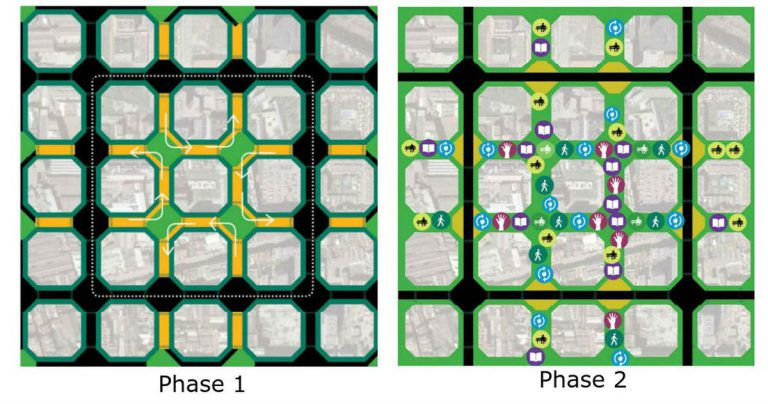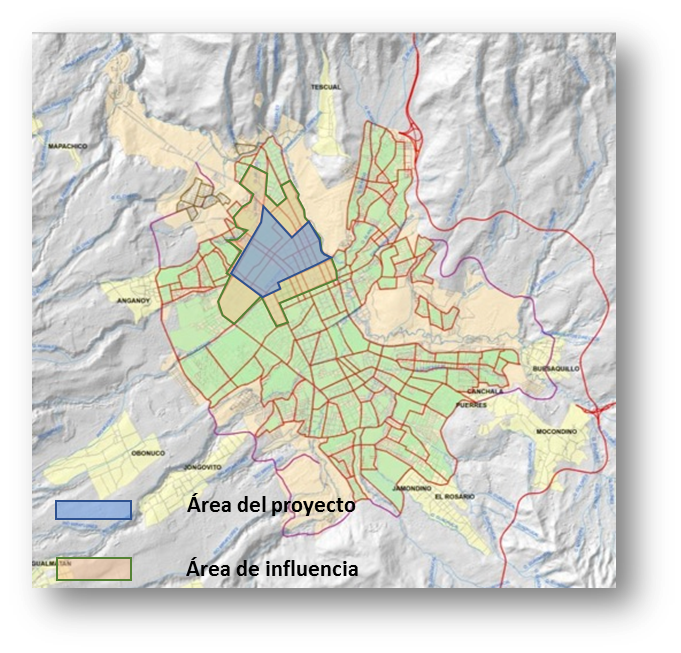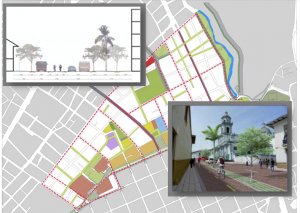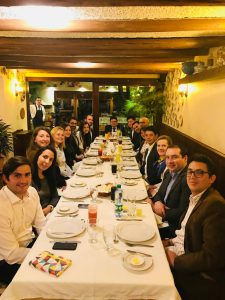Colombia TOD NAMA: Disruptive Urban "Technology" and Superblocks
- Steve Winkelman
- Apr 26, 2018
- 3 min read
CCAP project leads Steve Winkelman and Chuck Kooshian have just returned from their latest mission during which they guided CIUDAT (FINDETER) on implementation of the Colombia TOD NAMA Support Project funded by Germany and the UK through the NAMA Facility. The trip focused on the catalytic TOD pilot project in Pasto, Colombia. They were joined by CCAP’s delivery partner KfW and IDOM, the consulting firm selected to lead pre-feasibility studies in Pasto, Cali and Manizales. The IDOM team brings extensive experience in urban transformation and smart growth in Spain, Colombia and cities around the world.
CCAP framed the major discussion of the mission around transit-oriented development as disruptive urban “technology.” TOD neighborhoods can be seen as technologies that include high quality public transportation, safe and convenient sidewalks and bike lanes connecting, housing, shops, offices and government services, interspersed with public and green spaces. Yuri Suzuki’s iconic circuit board map of the London Underground helps visualize the concept of TOD as technology. TOD technology can reduce driving by 30-50%.

The mission to Pasto was the first in a series of visits in which CIUDAT and IDOM will engage city officials, communities and private real estate developers to better understand barriers to TOD opportunities, gather specific data about key neighborhoods and to prioritize catalytic projects for feasibility studies that will start in the fall. CIUDAT and IDOM are now preparing for parallel missions to Cali and Manizales over the coming months.
Pasto’s TOD intervention is inspired by the “superblock” (super-manzana in Spanish) concept being championed in Barcelona, Spain as part of their mobility plan to aimed at reducing traffic and converting streets to citizen spaces (see this Vox video). The idea is to restrict motorized traffic and prioritize pedestrians and public spaces within super-manzanas that are safer, cleaner and more conducive to daily life and sustainable economic activity.

Pasto’s supermanzana efforts are being launched in the north-central part of the city, a bustling mix of urban uses, including housing, businesses and education centers at moderate densities, and is traversed by key routes of Pasto’s Avante strategic public transport system. However, traffic congestion and air pollution are significant problems in commercial areas and sidewalks are over-crowded. Speeding vehicles threaten pedestrian safety in educational and residential areas, pedestrians do not have priority and there is a lack of public and green spaces.

The TOD NAMA Support Project will fund catalytic interventions to improve pedestrian accessibility and enhance green and public spaces as part of a comprehensive strategy to improve quality of life and efficiency and attract new private real estate investment to grow this TOD neighborhood. Planned interventions in Pasto include traffic calming, reduction of vehicular roads, preferential roads for public transport and pedestrians, expansion of sidewalks, generation of spaces for bicycles, and redirecting high intensity traffic to the exteriors of the super-manzanas.

CIUDAT technical support has already resulted in tangible changes in Pasto, including shifting the launch of the construction of the Pasto River Park to a section closer to the TOD neighborhood. CIUDAT was also influential in Pasto’s decision to build fewer lanes for private vehicles on a major thoroughfare (27th Avenue), which is currently under construction with the redesign with new priority lanes for buses, cyclists and pedestrians. Additionally, CIUDAT guidance led real estate developers to change an intersection design from a round-about to a set of signalized intersections for the benefit of pedestrians and cyclists.

The team met with the acting mayor of Pasto, the directors of planning, transportation, public transport, environment and finance to discuss baseline data collection, barriers to attracting private development in the intervention neighborhood and catalytic intervention opportunities. We also discussed potential control neighborhoods that form a central part of the comprehensive TOD NAMA Monitoring & Evaluation (M&E) strategy and will allow for tracking the impacts of the supermanzana interventions over time.
CIUDAT is currently developing M&E guidance to help cities track implementation progress, public and private investment in TOD areas, and the changes in land use and travel behavior that lead to reductions in GHG emissions. CCAP discussed some of these ideas during a GIZ-sponsored webinar in January. CIUDAT is also working with Colombia’s Ministry of Environment and Sustainable Development to harmonize M&E of NAMAs and city-level interventions with the national GHG Measurement, Reporting and Verification (MRV) system.


コメント